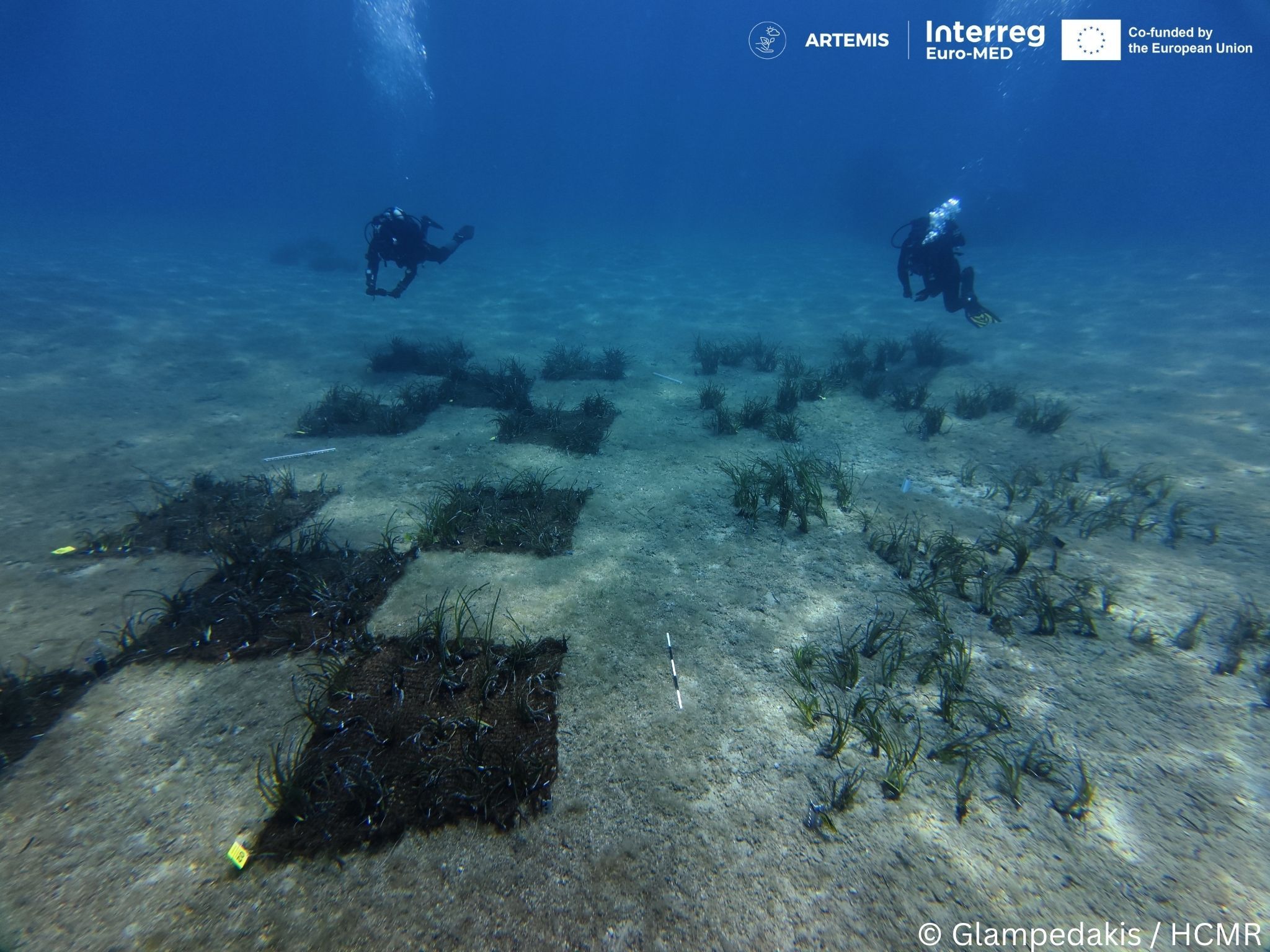Significant progress is underway at the Greek pilot site of Atzikiari Bay, Sitia, Crete, within the framework of the ARTEMIS Interreg Euro-MED project.
Later in April 2025, a targeted underwater cleanup operation was carried out to remove the physical remnants of a former fish farm. The cleaning allowed the bay’s seabed to be prepared both for assisted transplantation and to favour natural regeneration processes. As highlighted in a previous update (read here), this preparatory work marked the beginning of a long-term commitment to the site’s ecological recovery.
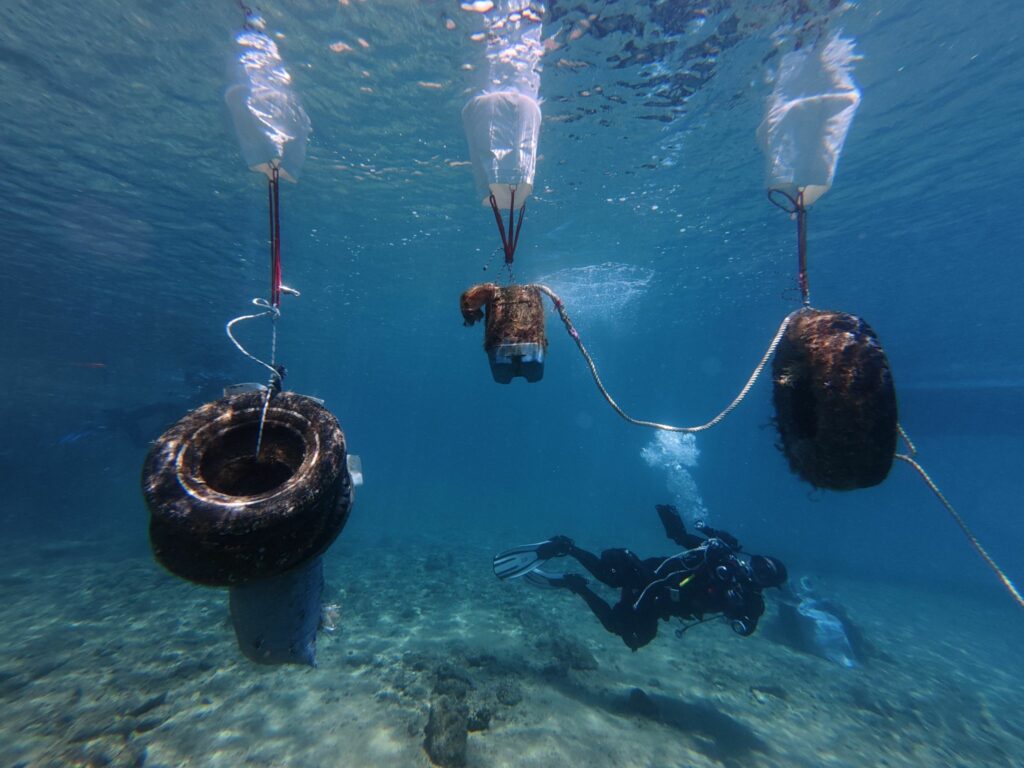
Seabed cleanup operations in Atzikiari Bay, carried out last March in collaboration with the NGO Aegean Rebreath, HCMR – Institute of Oceanography, and the Municipality of Sitia.
Catalina A. Garcia Escudero, PhD candidate at HCMR, highlights the importance of the preliminary phase: “The initial underwater cleanup was an important preparatory step that helped set the stage for restoration. By clearing the seabed of fish farm remnants and plastic pollution, we create more favorable conditions for both active restoration and natural recovery to take place.”
Following this, the Seagrass Ecology Lab at HCMR (Hellenic Centre for Marine Research) conducted the first transplantation of Posidonia oceanica, a seagrass species critical to the health and resilience of the Mediterranean Sea. The intervention involved the planting of approximately 1,300 cuttings across a 100-square-metre area.
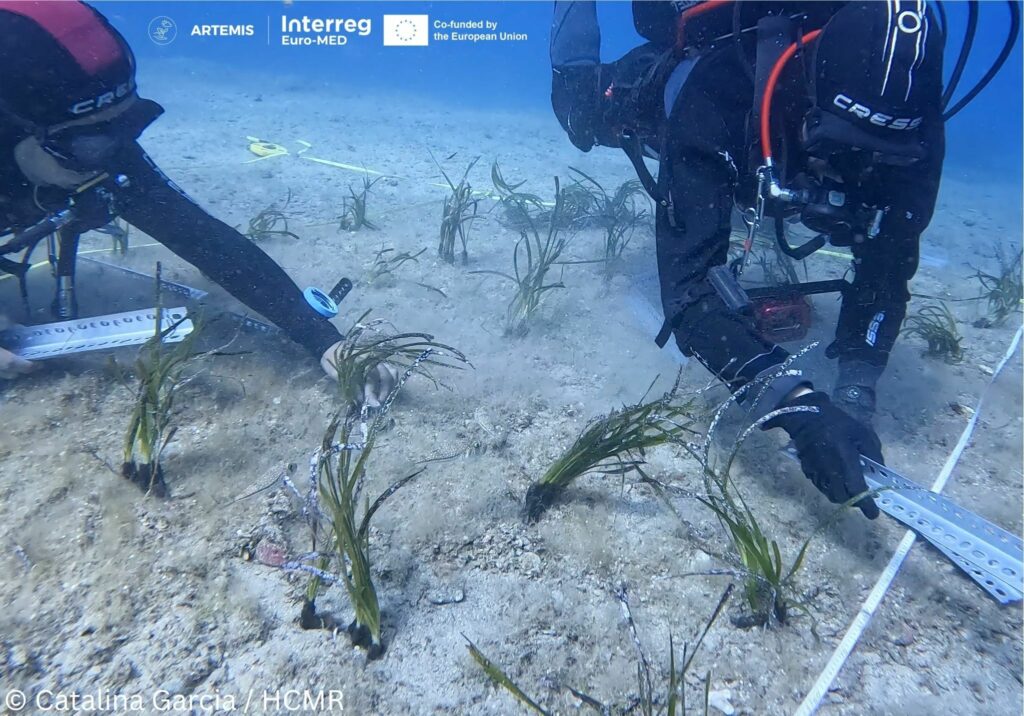
Restoring Posidonia oceanica in Greece – ARTEMIS Interreg Euro-MED
The area was divided into two distinct 50-square-metre plots, each testing a different planting technique: one using coconut fibre mats, the other using metal staples. Two planting densities were also tested – 25 cuttings/m² and 40 cuttings/m². This dual approach allows for a comparative assessment of effectiveness and will inform the refinement of scalable methods for future restoration efforts.
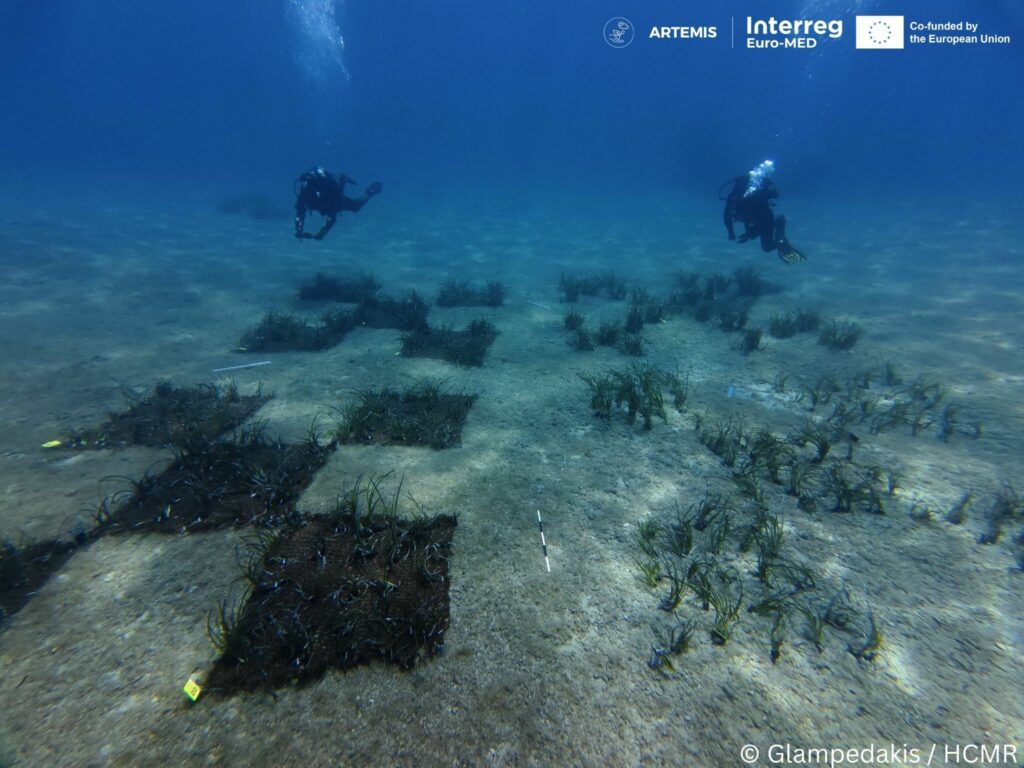
The area was divided into two distinct 50-square-metre plots, each testing a different planting technique. Restoring Posidonia oceanica meadows in Atzikiari Bay within the ARTEMIS Interreg-Euro-MED
The choice of Atzikiari Bay was not incidental. The area has lost nearly 66% of its Posidonia coverage due to past aquaculture operations. Restoring this habitat is not only an ecological necessity—given the vital role seagrass plays in maintaining biodiversity, stabilising sediments, and storing carbon—but also a symbolic step toward reversing years of environmental degradation in the region.
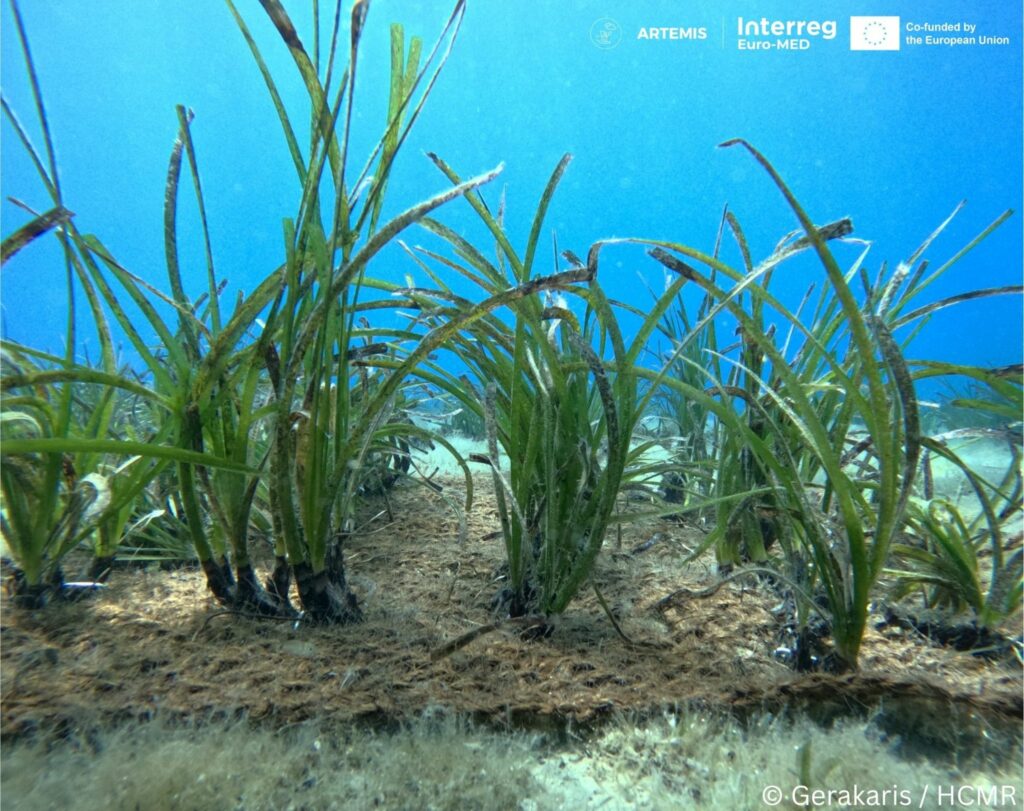
The transplantation was conducted by a joint team of researchers and technical divers, coordinated by Dr. Vasilis Gerakaris, post-doctoral researcher at the Institute of Oceanography of HCMR. The diving team included Julius Glampedakis, Georgios Chatzigeorgiou, Grigoris Skouradakis, Catalina A. Garcia Escudero and Dr. Eugenia Apostolaki.
“Divers must have knowledge or experience with Posidonia to correctly identify suitable cuttings for transplantation, handle them properly -without causing damage- and apply best practices throughout the process” says Dr. Vasilis Gerakaris.
Beyond ecological conditions, technical skills and specialised knowledge are also critical for success.
“We have lost almost 6.5 ha of Posidonia in 20 years. Transplanting 0.01 ha is not enough in terms of scale. Transplantation of Posidonia oceanica is not an easy fix—it requires time, adequate funding, and, above all, long-term commitment,” explains Dr. Eugenia Apostolaki. “But even these conditions are not sufficient on their own. Restoration can only be effective if the pressures that caused the degradation—such as industrial activities like fish farming—are completely removed, and if future impacts are carefully anticipated and prevented.” concludes Apostolaki.

